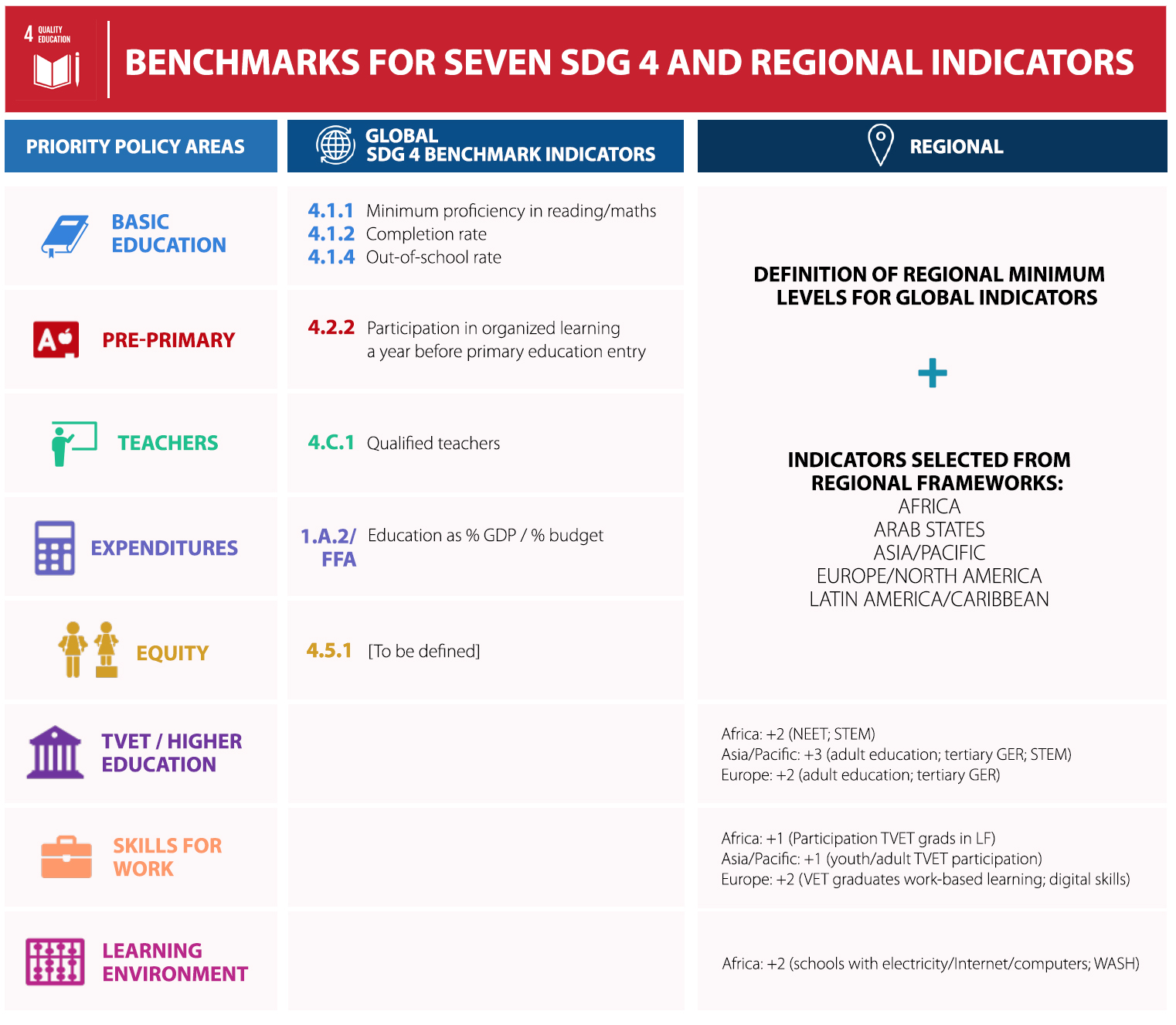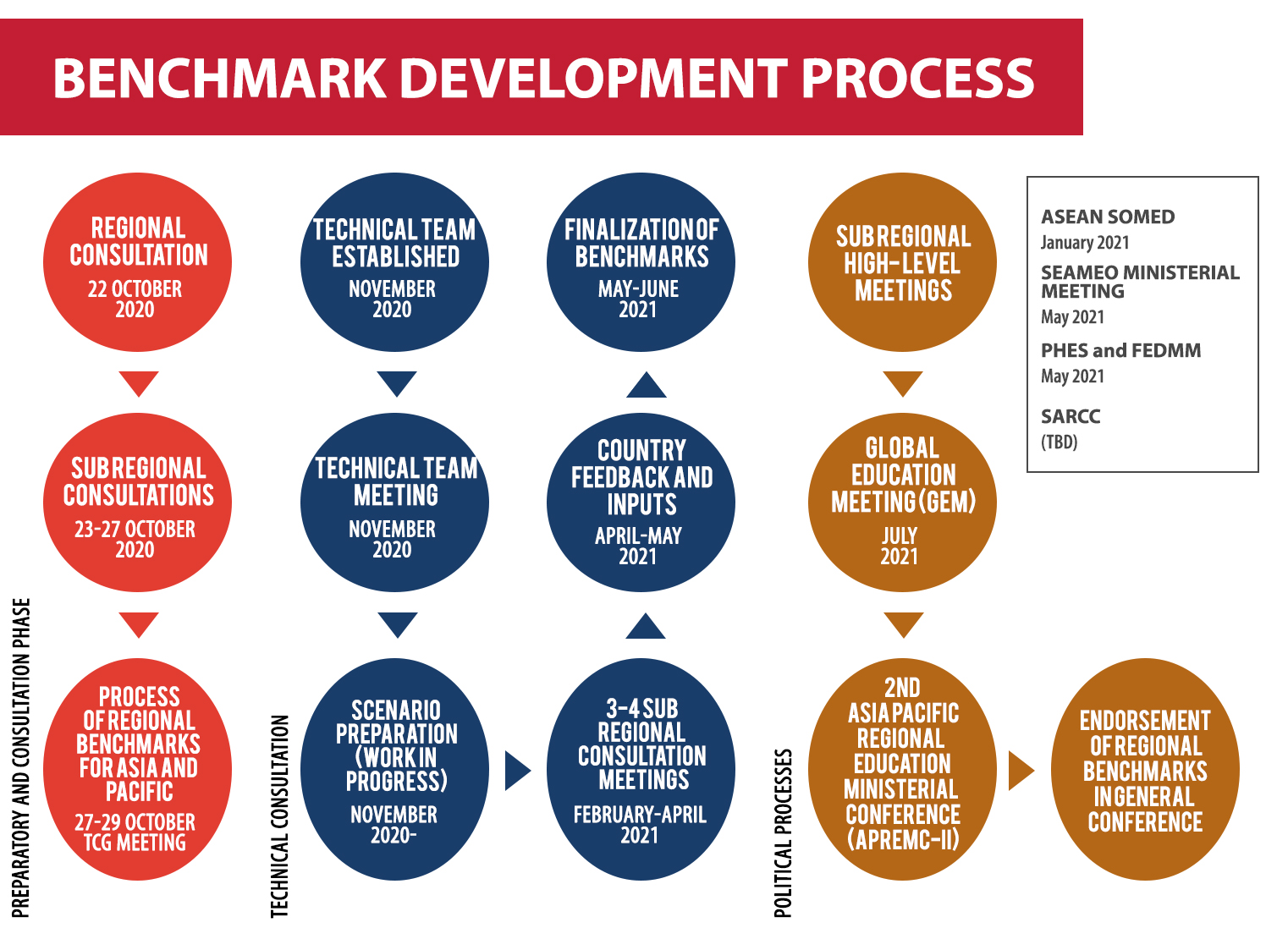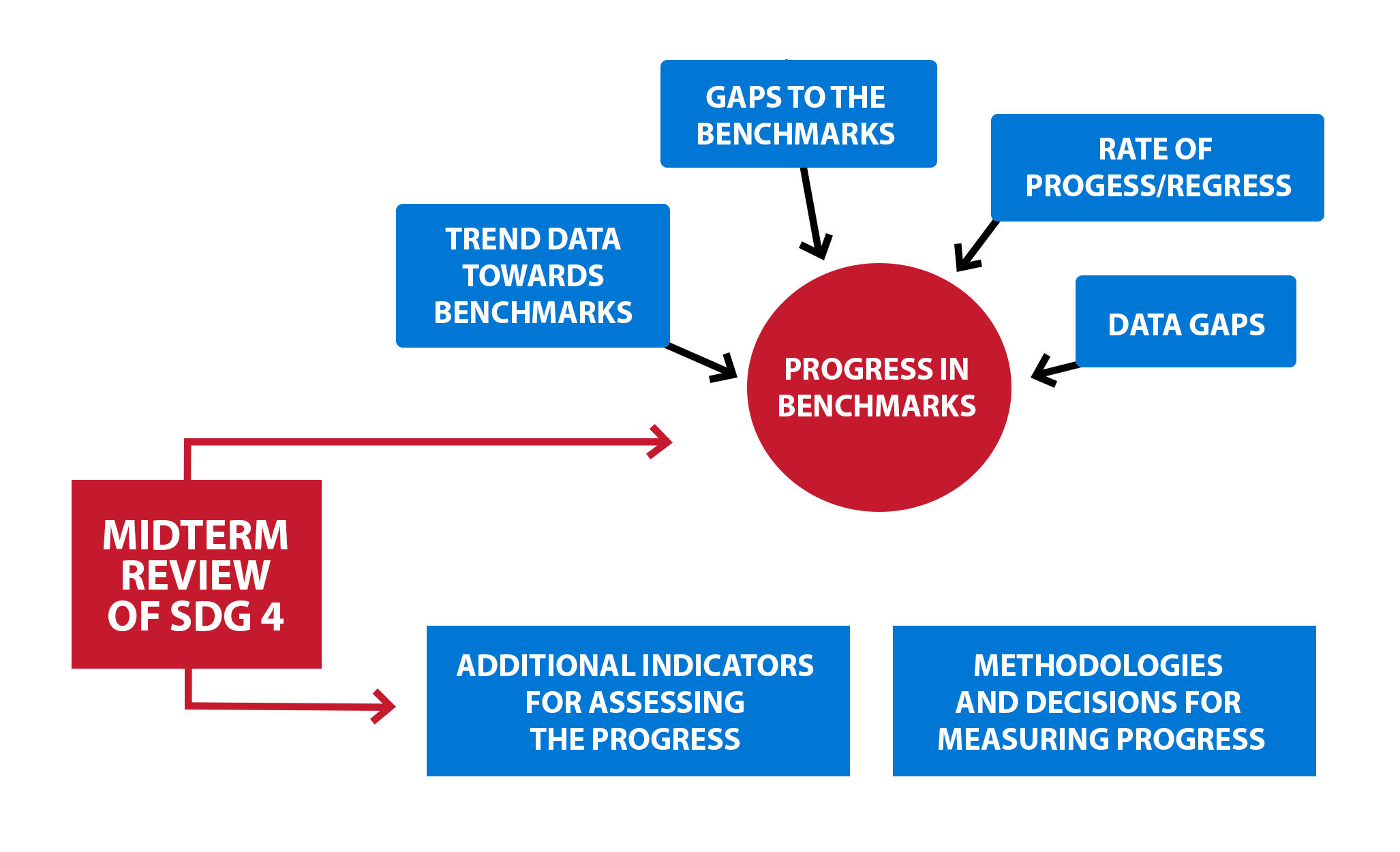Regional Benchmarks on Indicators for SDG 4
Background
The Education 2030 Framework for Action called on Member States to establish appropriate intermediate benchmarks for the SDG 4 indicators, calling them “indispensable for addressing the accountability deficit associated with longer-term targets” (Para.28) - a request that has remained unrealized.
The Global Education Meeting in 2020 reminded Member States, UNESCO and its partners worldwide on the commitment to “accelerate the progress and propose relevant and realistic benchmarks of key SDG 4 indicators for subsequent monitoring” (Para. 10). Setting a benchmark reflective of each region’s reality requires transparent technical processes supported by determined political actions.
Benchmark Indicators

To facilitate identifying relevant benchmarking, the Technical Cooperation Group (TCG) responsible for developing the SDG 4 monitoring framework has proposed seven indicators which can feasibly benchmark the SDG 4 progress. These seven indicators have been selected primarily from the SDG 4 monitoring framework for their internationally common policy relevance and data availability.
- Minimum learning proficiency in reading and mathematics (SDG 4.1.1)
- Completion rate, by education level (SDG 4.1.4)
- Out-of-school rate, by education level (SDG 4.1.5)
- Participation Rate in organized learning one year before Primary (SDG 4.2.2)
- Percentage of trained teachers, by education level (SDG 4.c.1)
- Share of government expenditure on education (SDG 1.a.2)
- Government expenditure on education as share of GDP
Technical Process
The technical development process of the benchmark indicators currently takes place through consultations and discussions involving experts and officials from Member States. These consultations are coordinated by regional bodies and working groups on Education 2030, in which the UNESCO Institute for Statistics takes the technical lead and support to Member States. Past the feedback from Member States, the benchmark indicators will find discussion during the upcoming international high-level political forums for final endorsement.

Regional Roadmap for Asia-Pacific
The Regional Roadmap for the SDG 4-Education 2030 Agenda in Asia-Pacific (2015-2030) specified increasing monitoring capacities among Member States. In the absence of any agreed benchmarking approach in the region, the proposed benchmark indicators will serve to ease effective monitoring of the progress towards SDG 4. Specifically, the benchmark indicators can serve as an orientation to develop data collection strategies and standardize processes as well as to provide data for the 2022-2023 scheduled Mid-Term Review.

Regional Minimum Benchmark Methodology for Asia–Pacific
For the Asia-Pacific Region, additional indicators were proposed during consultations for establishing regional minimum benchmarks. These were
- Participation rate of youth and adults in formal and non-formal education and training (SDG 4.3.1)*
- Gross enrolment ration for tertiary education (SDG 4.3.2)
- Participation rate in technical vocational education programme (SDG 4.3.3)
- The percent of students in Tertiary Education in STEM field
* Given the lack of data for establishing a baseline, it has been proposed that SDG 4.3.1 would be benchmarked at a later date
Proposed approach
- A regional minimum benchmark would be selected through an informed collaborative Consultation process
- Establishing benchmarks while acknowledging the association between indicators and country income level will help reach a balance between feasibility for lower income countries and aspirations for skills development and economic growth and transformation
- As a result, initial sub-regional minimum benchmarks have been proposed approximating the highest levels achieved by the countries with the lower per capita incomes as a starting point for discussion
Linkages between Benchmark progress data and Midterm Review of SDG 4

Dashboard on Regional and National Benchmarks

|
The dashboard shows the baseline, national projection and feasible/proposed benchmarks for 2025 and 2030 in a range of regional entities and groupings, as a basis for decisions on regional and national benchmark setting. |


